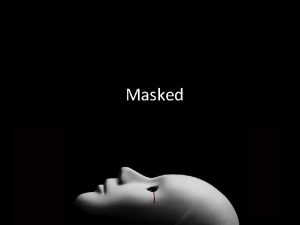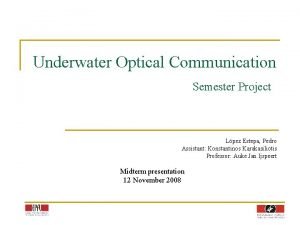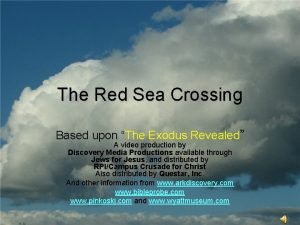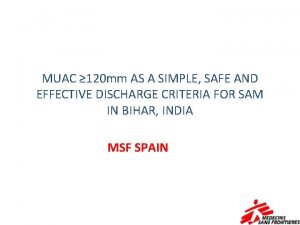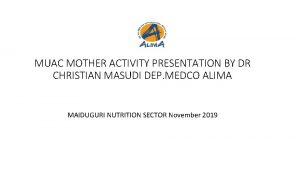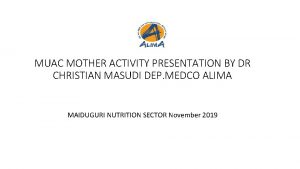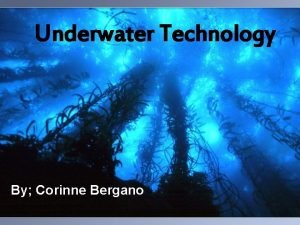Underwater Networking and MUAC Underwater Networking and Masked








- Slides: 8

Underwater Networking and MUAC Underwater Networking and Masked Underwater Acoustic Communication POCs: Justin Rohrer [PI] (jprohrer@nps. edu) Carl Prince (cdprince@nps. edu)

Importance • The underwater domain is becoming an increasingly important area for the Navy. There are important systems at sea that can not give away their location: • • Underwater Gliders Underwater sensors Underwater drones Manned submarines • There needs to be a network to land in order to facilitate information this network may involve routers/hubs, etc. • Modeling this network is important

Underwater Networking • Create an underwater software defined network U-SDN, modeling underwater delays include detectors both fixed and movable • Map out how devices will connect and communicate to the land • Design of infrastructure

Use cases • Sensors transmitting OK -- location and good operation, nothing found – can be performed with very minimal data rates, is performed relatively often compared to sending detection data, it is important that this is performed so as not to be detected • Transmitting detection data – more important data, non-trivial data amounts may need to be sent relatively quickly

MUAC Masking Sounds • Since some underwater devices can not give away their location we must communicate in a way such that the communication is undetectable, this can be performed using masking sounds: • Biologics • • • dolphins shrimp whales crabs other • • • bubbles water underwater background noise earth quake noise other • Naturally occurring sounds

Acoustical Communication • Native acoustic communication can be performed by • Putting together sounds to send symbols • Using sound segments to send multiple symbols • Data rates can be more than ‘transmitting OK’ • Native acoustics as a carrier wave with steganographic data sent on the carrier wave to achieve a low probability of detection [Passerieux] • Data rates are very slow, 1 -4 symbols per sec, but very hard to detect • Can send on naturally occurring sounds • travel distance can be characterized as shorter • Can send on biologics • Travel distance can be longer • Current method based on Passerieux Patent US 20170149522 A 1

Current Work • Focused on steganography, or the data hiding art of hiding messages in plain sight. • Use of spread spectrum using steganography to send messages • Steganographic algorithm is implemented by hiding bits/symbols in phase centered on a carrier frequency (signal processing). • The carrier transmission masks the underlying message. • Carrier transmissions are previously recorded or database stored sound clips in order to be representative of current environment and background noise conditions – can be ambient discrete, or continuous, and natural, or biologics • Exploring effects of modulation schemes on data rates and imperceptibility. • Goal is to send data and to recover messages, while at the same time being undetected by a trained adversary sonar operator with time-frequency displays. • Optimize which carrier sounds act as the best covers and trade offs of distance traveled vs. perceptibility.

MUAC Future Work • There is no one chosen model in published work, there are many models used to model communication, is there an optimal model – a model that is accurate and able to model transmission using time and frequency domains? • The current method the student has working is a bi-polar model, can we use a quadrature-polar model? • Currently we use 360 degrees as one cycle, can we create a timing algorithm to include non-360 degree cycles to make detection even harder? • Are there better steganographic or covert waveform approaches to Passerieux’s covert UAC? • Can we make an algorithm or modulation scheme improvement(s) for robustness, embedding efficiency, imperceptibility? • How good is our method of steganalyis – need a detailed statistical analysis of artifacts as a result of the embedding algorithm, and or how to attack this scheme? • Will our method actually work at sea – testing? • Can this scheme be implemented -- take the results of this study, once proven feasible, and find a way to bridge the gap with a program of record Navy system onboard ships, submarines, sonobouys, etc.



